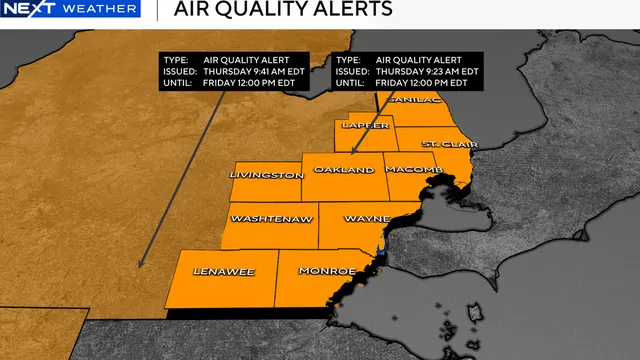
Smoke from Canadian wildfires blankets Philadelphia and Europe
2025-06-05 17:53- Smoke from the ongoing Canadian wildfires will be noticeable in the Philadelphia area on June 3, 2025.
- Winds are carrying some of the smoke into the eastern U.S., although air quality alerts are not currently in effect.
- This situation is less severe compared to previous years, indicating improved conditions in managing wildfire smoke.
Express your sentiment!
Insights
The ongoing wildfires in Canada are contributing to smoke that affects both the Philadelphia area in the United States and parts of northwestern Europe. As of June 3, 2025, the Philadelphia region will experience visible haze due to this smoke, although air quality remains relatively stable and no alerts have been issued. Winds are directing some of this smoke into the eastern U.S., with a larger concentration anticipated to linger in the Philadelphia area starting Tuesday afternoon. Unlike the much more severe air quality conditions faced in 2023, this year's impact is expected to be less severe, making it a far more manageable situation. In Canada, over 100 wildfires are reported to be raging, primarily affecting the provinces of British Columbia, Saskatchewan, and Manitoba. These areas have experienced exceptionally dry conditions leading to what authorities describe as the worst start to the fire season in years. Smoke plumes from these wildfires have reached significant altitudes, allowing them to be carried over vast distances, including across the Atlantic Ocean. The Copernicus Atmosphere Monitoring Service has reported that smoke originating from these Canadian wildfires has traveled across the Atlantic, reaching parts of northwestern Europe by June 1, 2025. This smoke is expected to create hazy skies but is not anticipated to significantly degrade surface air quality or pose immediate health risks. Local health authorities in areas affected by smoke typically issue air quality alerts when higher concentrations of particulate matter are detected. For the time being, officials are monitoring the situation as smoke from wildfires continues to impact various regions, with ongoing assessments in the United States, especially in states like Michigan, Wisconsin, and Minnesota where air quality conditions varied significantly. As the fire season progresses, forecasts suggest potential for increased intensity of wildfire activity in Canada, raising concerns about future smoke impacts both locally and globally.
Contexts
Wildfire smoke significantly impacts air quality, affecting both environmental conditions and public health. As wildfires increase in frequency and intensity due to climate change, the smoke they produce can travel vast distances, impacting air quality far from the fire's origin. This smoke contains a complex mixture of pollutants, including particulate matter (PM), volatile organic compounds (VOCs), and gases such as carbon monoxide and nitrogen oxides. These pollutants can contribute to respiratory issues, cardiovascular diseases, and other health problems, particularly in vulnerable populations such as children, the elderly, and individuals with pre-existing health conditions. Understanding the composition and dispersion of wildfire smoke is crucial in developing effective public health strategies and advisories during wildfire events. Particulate matter, especially PM2.5, is one of the most concerning components of wildfire smoke. It consists of tiny particles that can penetrate deep into the lungs and even enter the bloodstream, leading to health complications. Studies have demonstrated correlations between elevated levels of PM2.5 and increased hospital admissions, exacerbations of asthma, and other respiratory ailments. Moreover, the chemical composition of wildfire smoke can vary significantly based on factors such as the type of vegetation burned, the moisture of the fuel, and atmospheric conditions. This variation can influence the smoke's toxicity and its long-term effects on air quality. The dispersion of wildfire smoke is affected by meteorological conditions, including wind patterns, humidity, and temperature. During wildfire events, these factors can lead to the rapid spread of smoke, resulting in poor air quality across large regions. Air quality monitoring systems are essential for timely information and response strategies. National and local agencies often issue air quality alerts and health advisories, warning the public when particulate levels reach harmful thresholds. Furthermore, advancements in technology, including satellite imagery and modeling, are being utilized to track and predict smoke dispersion, providing valuable data for emergency response initiatives. The long-term implications of continued wildfires and their smoke on air quality remain a significant concern. Ongoing research is required to better understand the interaction between climate change and wildfire patterns. As temperatures rise and drought conditions become more prevalent, the likelihood of severe wildfires may increase, leading to more frequent instances of poor air quality. Public awareness campaigns, coupled with policy changes aimed at improving forest management and fire prevention strategies, are critical in mitigating these risks. In addition, enhancing community resilience through preparedness education can help lessen the impact of wildfire smoke on air quality and public health.